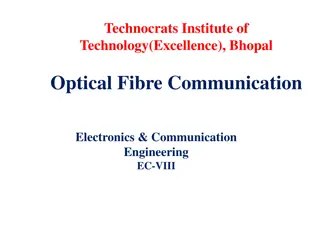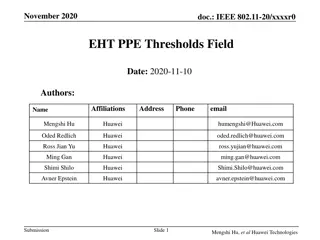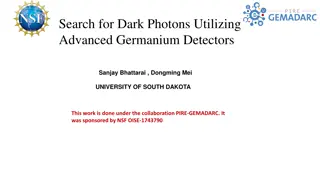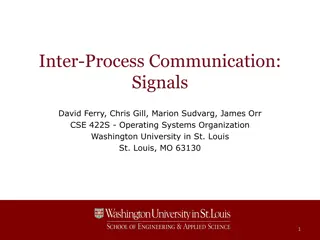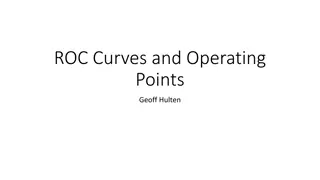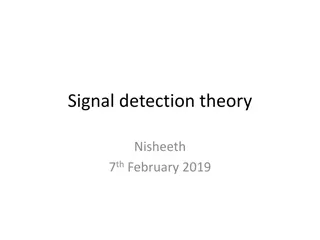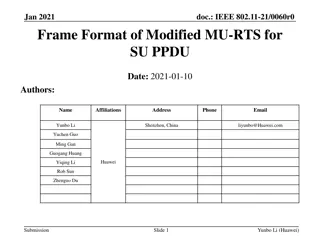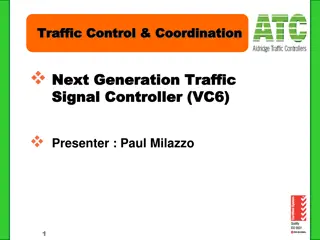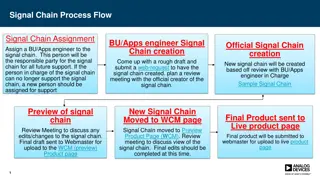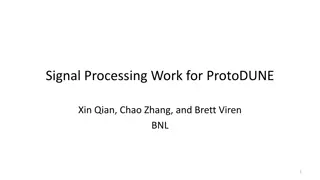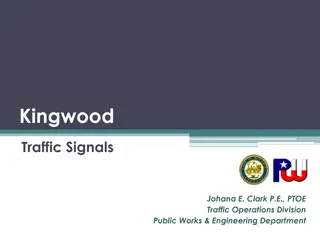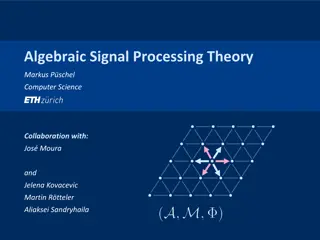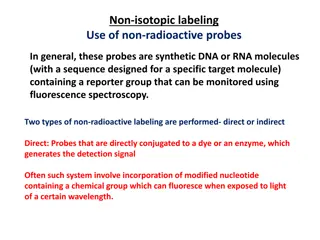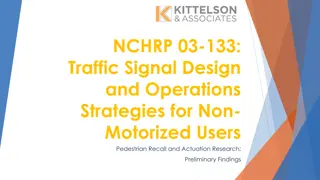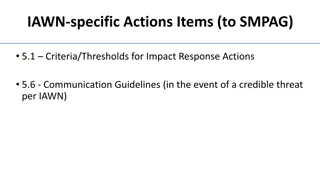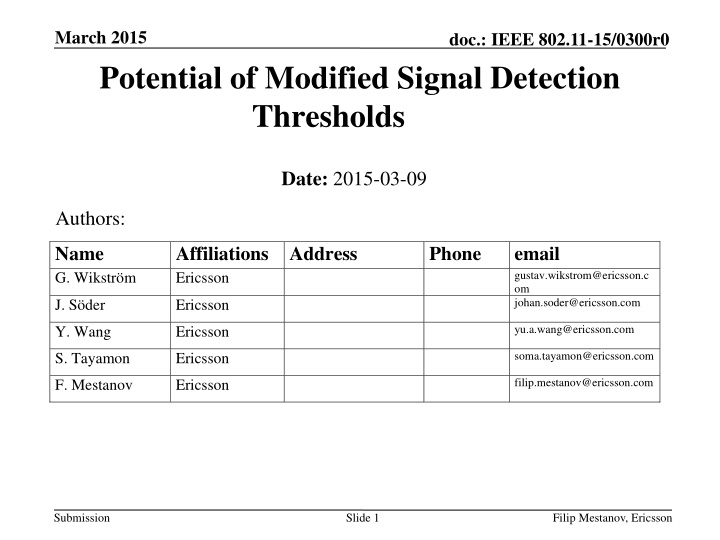
Investigating Signal Detection Threshold Effects in IEEE 802.11
This document explores the impact of modified signal detection thresholds in IEEE 802.11 networks, emphasizing the importance of accurate modeling for performance gains. Key parameters and simulation assumptions are investigated to estimate potential improvements in network efficiency and throughput.
Download Presentation

Please find below an Image/Link to download the presentation.
The content on the website is provided AS IS for your information and personal use only. It may not be sold, licensed, or shared on other websites without obtaining consent from the author. If you encounter any issues during the download, it is possible that the publisher has removed the file from their server.
You are allowed to download the files provided on this website for personal or commercial use, subject to the condition that they are used lawfully. All files are the property of their respective owners.
The content on the website is provided AS IS for your information and personal use only. It may not be sold, licensed, or shared on other websites without obtaining consent from the author.
E N D
Presentation Transcript
March 2015 Potential of Modified Signal Detection Thresholds doc.: IEEE 802.11-15/0300r0 Date: 2015-03-09 Authors: Name G. Wikstr m Affiliations Address Ericsson Phone email gustav.wikstrom@ericsson.c om johan.soder@ericsson.com J. S der Ericsson yu.a.wang@ericsson.com Y. Wang Ericsson soma.tayamon@ericsson.com S. Tayamon Ericsson filip.mestanov@ericsson.com F. Mestanov Ericsson Submission Slide 1 Filip Mestanov, Ericsson
March 2015 doc.: IEEE 802.11-15/0300r0 Abstract Several studies have investigated the impact of increased signal detection thresholds Performance gains vary a lot between evaluations Importance of correct modeling of preamble detection shown in 11-15/0050r0, [1] This contribution investigates effects of changing signal and energy detection thresholds and estimates the potential gains of such changes Submission Slide 2 Filip Mestanov, Ericsson
March 2015 doc.: IEEE 802.11-15/0300r0 Investigated Parameters CCAT is signal detect threshold EDT is energy detection threshold Energy detection will be used if The SINR of the preamble is too low to decode (< 3 dB) The receiver is busy with transmission or reception at the time the preamble is sent and starts sensing in the middle of the frame 3 cases Legacy: CCAT = -82dBm, EDT = -62dBm Green: CCAT = -62dBm, EDT = -62dBm Red: CCAT = -52dBm, EDT = -52dBm Submission Slide 3 Filip Mestanov, Ericsson
March 2015 doc.: IEEE 802.11-15/0300r0 Simulation assumptions TGax Scenario 2: Enterprise 50% UL 50% DL traffic Equal buffer (file transfer with varied intensity), file size 1MB Ref: 11-14/0866r1, [2] Served traffic per AP is total volume received in UL & DL per AP CWmin = 15, CWmax = 1023 Realistic link adaptation algorithm (Minstrel) Submission Slide 4 Filip Mestanov, Ericsson
March 2015 doc.: IEEE 802.11-15/0300r0 DL performance 600 User Throughput (Mean and 5th perc) [Mbps] LEGACY CCAT -62dBm (DSC) CCAT -52dBm (DSC 2) 500 400 300 200 100 0 0 50 100 150 200 Served traffic per AP [Mbps] Next slides present results from a highly loaded traffic point at ~120 Mbps/AP Submission Slide 5 Filip Mestanov, Ericsson
March 2015 doc.: IEEE 802.11-15/0300r0 Utilization At the selected load point the mean access point utilization is around 25% The channel utilization as perceived from one AP is however ~70% for the legacy system. With increased sensing thresholds the channel is not perceived as busy, reducing the time spent in back-off state. AP and Channel utilization [%] 80 60 AP utilization Channel utilization 40 20 0 Legacy CCAT = -62 dBm CCAT = -52 dBm Submission Slide 6 Filip Mestanov, Ericsson
March 2015 doc.: IEEE 802.11-15/0300r0 DL Transmission attempts DL Transmission 1 0.9 0.8 0.7 0.6 -82 dBm -62 dBm -52 dBm Fraction 0.5 0.4 0.3 0.2 0.1 0 Backoff OK Fail TX OK Out of transmissions TX Fail Out of attempts Number of back-offs reduced substantially, from 72% in legacy system to 25% in most aggressive case Fraction of failed packets does not increase very much Submission Slide 7 Filip Mestanov, Ericsson
March 2015 doc.: IEEE 802.11-15/0300r0 UL Transmission attempts UL Transmission 1 0.9 0.8 0.7 0.6 -82 dBm -62 dBm -52 dBm Fraction 0.5 0.4 0.3 0.2 0.1 0 Backoff OK Fail TX OK Out of transmissions TX Fail Out of attempts Number of back-offs reduced substantially, from 65% in legacy system to 27% in most aggressive case Fraction of failed transmissions quite high in all scenarios, but does not increase much with increased thresholds Slide 8 Submission Filip Mestanov, Ericsson
March 2015 doc.: IEEE 802.11-15/0300r0 Signal vs. Energy Detect DL DL Transmission backoff 1 0.9 0.8 0.7 0.6 -82 dBm -62 dBm -52 dBm Fraction 0.5 0.4 0.3 0.2 0.1 0 Virtual Out of attempts Physical BSS DL BSS UL OBSS DL OBSS UL Out of back-offs Signal detect back-offs significantly reduced when increasing CCAT, when increasing ED also energy detection back-offs are reduced At -52dBm the main back-off reason is for transmissions in same BSS Submission Slide 9 Filip Mestanov, Ericsson
March 2015 doc.: IEEE 802.11-15/0300r0 Signal vs. Energy Detect UL UL Transmission backoff 1 0.9 0.8 0.7 0.6 -82 dBm -62 dBm -52 dBm Fraction 0.5 0.4 0.3 0.2 0.1 0 Virtual Out of attempts Physical BSS DL BSS UL OBSS DL OBSS UL Out of back-offs At -52dBm 94% of back-offs are for transmissions in same BSS, equally split over DL and UL Submission Slide 10 Filip Mestanov, Ericsson
March 2015 doc.: IEEE 802.11-15/0300r0 Failure causes An analysis was made on what caused a packet failure, the following categories were used: Coll DL: Collision with a DL frame in the same BSS due to same random backoff value Coll UL: Collision with an UL frame in the same BSS due to same random backoff value BSS DL: Frame was partly concurrent with a DL frame in the same BSS BSS UL: Frame was partly concurrent with an UL frame in the same BSS, hidden node BSS: Frame was partly concurrent with more than one frame in the same BSS OBSS DL: Frame was interfered by a DL frame from another BSS OBSS UL: Frame was interfered by an UL frame from another BSS Multiple OBSS: Frame was interfered by several frames from another/other BSS/s Submission Slide 11 Filip Mestanov, Ericsson
March 2015 doc.: IEEE 802.11-15/0300r0 Cause of Failures DL DL Transmission fail 1 0.9 0.8 0.7 0.6 Fraction 0.5 ACK not a problem 0.4 0.3 -82 dBm -62 dBm -52 dBm 0.2 0.1 0 OBSS Multiple OBSS TX Data Ack Coll DL Coll UL BSS DL BSS UL BSS OBSS DL OBSS UL Out of failures Out of failures Collisions reduced with increased CCAT and EDT Fewer nodes becoming aligned in time due to back-off for the same transmissions Mainly OBSS interference from multiple interferers behind failures Submission Slide 12 Filip Mestanov, Ericsson
March 2015 doc.: IEEE 802.11-15/0300r0 Cause of Failures UL UL Transmission fail 1 0.9 0.8 0.7 0.6 Fraction 0.5 0.4 Hidden node -82 dBm -62 dBm -52 dBm 0.3 0.2 0.1 0 Multiple OBSS TX Data Out of failures Ack Coll DL Coll UL BSS DL BSS UL BSS OBSS DLOBSS UL OBSS Out of failures Hidden node problem increases with increased CCAT, but fraction still <10% Submission Slide 13 Filip Mestanov, Ericsson
March 2015 doc.: IEEE 802.11-15/0300r0 Potential of Modified Signal Detection Thresholds Removing all waiting time due to CS back-off, what is the potential gain? Same SINR and MCS assumed 30 25 20 CCAT = -82dBm 15 CCAT = -62dBm 10 CCAT = -52dBm 5 0 Gain potential Submission Slide 14 Filip Mestanov, Ericsson
March 2015 doc.: IEEE 802.11-15/0300r0 Summary/Conclusion By modifying the CCAT and EDT the number of back- offs is reduced substantially, from 70% in legacy system to 25% in most aggressive case (CCAT = EDT = -52dBm) The potential of reducing sensing thresholds from legacy levels is about 28%. At -52dBm CCAT and EDT there is only 3.5% potential left Submission Slide 15 Filip Mestanov, Ericsson
March 2015 doc.: IEEE 802.11-15/0300r0 References [1] Modeling components impacting throughput gain from CCAT adjustment , 11-15/0050r0 [2] Traffic modeling and system capacity performance measure , 11-14/0866r1 Submission Slide 16 Filip Mestanov, Ericsson

